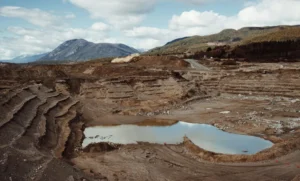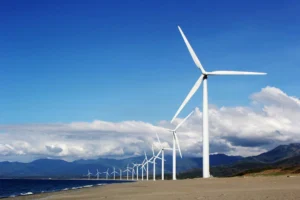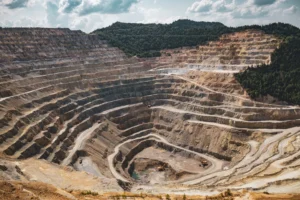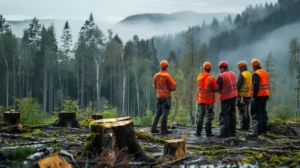Primary succession is an ecological succession initiating in areas devoid of any life previously. These hostile environments are devoid of soil and organic matter and thus hard to grow life in them. Over time, the biological communities begin to form by gradual simple organisms and leading to more complex ecosystems.
It is very essential for ecosystem development because of the process that organizes an empty place into a flourishing place able to be inhabited by many species.
Definition of Primary Succession
Primary succession is the slow process by which biological communities invade areas with no initial soil and life. It occurs in extreme environments, such as newly formed volcanic islands, areas exposed by melting glaciers, and places stripped bare by landslides.
Unlike secondary succession, which occurs in areas where life has previously existed but has been disturbed (like after a forest fire), primary succession begins from scratch. There is no soil to support plant life, so the process starts with organisms capable of surviving on bare rock or other harsh surfaces. These organisms set the stage for more complex life forms to appear as the ecosystem matures.
Stages of Primary Succession

Pioneer Stage
The first stage of primary succession is the pioneer stage. Pioneer species are those which are the first colonizers in a barren land. They are tolerant species. They can thrive in environments that most other life forms could not survive. They comprise lichens, mosses, and other kinds of algae. They grow directly on bare rock or any other exposed surface, playing vital functions in breaking down the substrate.
The pioneer species lives in an unfavorable environment, producing organic material in its growth and death, to be deposited and eventually contribute to the formation of soil. In this way, pioneer species may slowly modify an unfavorable landscape into one that can support more complex life forms.
Soil Formation
The formation of soil represents the second major stage of primary succession. As pioneer species grow, they break down the rock through physical and chemical weathering processes. For example, Lichens excrete acids which dissolve the rock and mosses trap moisture that can quicken the rate of erosion of the rock, thereby leading to the formation of a thin layer of soil through time.
As the pioneer species die and decompose, their decomposed matter combines with the broken down rock to make organic soil. The process is cumulative in nature since it starts building up the layer of soil step by step, thereby making the environment better for plant growth.
Intermediate Species
Once a minimum layer of soil is formed, more developed plant species, such as intermediate species begin their growth. Intermediate species consist of grasses, smaller sizes of shrubs and other plants which can flourish in shallow, poor-soil conditions. The deposited organic matters by the leaves, roots, and decomposed matters of these species improve the quality of soil to another extent.
With the presence of the intermediate species that enhances the growth rate of the more plant and animal species, higher biodiversity is promoted, and thus enables the ecosystem to keep developing.
Climax Community
Eventually, the ecosystem reaches a stage known as a climax community where it becomes stable and well-balanced. This community consists of different types of plants and animals that have adapted to the given conditions of the area. In a forest ecosystem, for instance, the climax community would comprise large trees, low-growing vegetation, and many animal species.
Although the climax community is more stable, they are not immune to disturbances from elements such as climate change, natural catastrophes, or human activities. Such elements tend to disturb the ecosystem, and the process of ecological succession may begin again.
Importance of Primary Succession

Ecosystem Development
Primary succession contributes significantly to transforming blank landscapes into complete ecosystems. It starts in areas where no organism can survive and gradually increases the complexity of biology needed to be represented by diverse organisms.
Pioneer species are the first species in this sequence: they inhabit hostile landscapes such as bare rock, which eventually develop into soil, allowing other more complex life forms to thrive. Eventually, once-barren landscapes become dense with interlinking food chains and ecosystems.
Nutrient Cycling
One of the significant roles of primary succession is to contribute their dead remains to the soil as they die and decompose. Pioneer species include lichens and mosses. This process enriches the originally bare environment with necessary nutrients, leading to conditions that favor more complex plant species.
With more massive plants and animals, they play their role in nutrient cycling and enrich the soil by replenishing it and improving ecosystem functionality.
Increased biodiversity occurs during primary succession. The beginning of pioneer species allows for the gradual arrival of intermediate and climax species, resulting in more complex and diverse ecosystems.
With every successional stage, new species of plants and animals are brought in with higher ecological diversity. Such rising biodiversity supports greater ecological strength, thereby making it stronger against disturbance and better able to offer opportunities for a wide variety of life forms.
Real-World Examples of Primary Succession
Volcanic Eruptions
The best examples of primary succession occur after volcanic eruptions. A good case in point is the succession that followed the eruption of Mount St. Helens in 1980. The eruption left an area covered with volcanic ash and rock with no life in it.
During the subsequent decades, pioneer species such as lupines invaded the area and began to create soil. Over time, further larger plants, trees, and animals returned to the area, thereby illustrating the full scope of primary succession.
Glacial Retreats
An excellent example of primary succession is glacial retreat areas. When the ice melts and decreases, there is bare exposure of rock surfaces. In Alaska and Greenland, pioneer species of mosses and lichens colonize newly exposed areas.
Over time, such species help break down rock, creating soil to support grasses, shrubs, and eventually forests. Slow development of ecosystems in these regions demonstrates the power of primary succession in modifying barren landscapes.
Landslides
Primary succession also occurs after landslides, which expose new surfaces by removing vegetation and topsoil. After landslides, pioneer species such as algae, mosses, lichens, and others are usually first to grow upon the exposed rock or soil. These species stabilize the area, help prevent erosion, and assist in soil formation. After some time, grasses, shrubs, and trees can begin their growth, and thus leading to the ecosystem recovery.
The Bottom Line
Primary succession is the ecological process by which barren land is transformed into a diverse ecosystem. From the first wave of colonization by pioneer species through the forming of complex climax communities, primary succession thus reflects the amazing resilience and adaptability of life.
Besides ecosystem development, it develops nutrient cycling and biodiversity, which makes the environment stable in the long run. Primary succession is recognized with the appreciation of how complicated processes let the ecosystem recover from disturbances and flourish even in extreme conditions.
FAQ's
What is primary vs secondary succession?
Primary succession occurs in barren areas without soil, while secondary succession occurs in areas with existing soil but no vegetation, following a disturbance.




